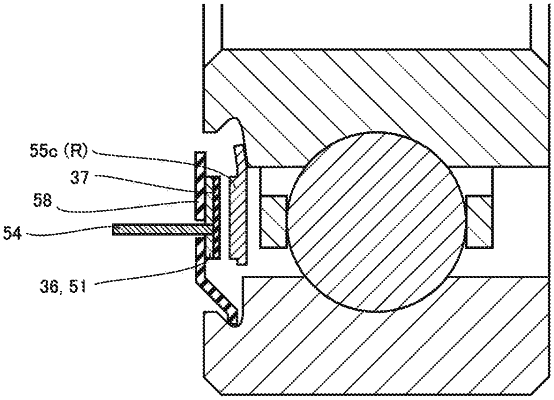| CPC F16C 41/007 (2013.01) [F16C 41/004 (2013.01)] | 26 Claims |

|
1. A rolling bearing comprising:
a stationary ring having a first facing surface;
a rotating ring having a second facing surface facing the first facing surface, the rotating ring rotating relative to the stationary ring;
rolling elements arranged between the first facing surface and the second facing surface;
a cage that retains the rolling elements;
first electrodes and second electrodes;
third electrodes fixed in position relative to the rotating ring, the rolling elements, or the cage;
an insulating film formed on surfaces of the first electrodes and the second electrodes; and
a lubricant, wherein
the third electrodes are each arranged such that a first distance that is a distance from the first electrode and a second distance that is a distance from the second electrode change with rotation of the rotating ring relative to the stationary ring,
the first electrodes and the second electrodes are alternately arranged along a circumferential direction such that a phase of temporal change of the first distance is shifted from a phase of temporal change of the second distance, and
the third electrodes and the insulating film slide on each other with the lubricant interposed in accordance with rotation of the rotating ring relative to the stationary ring so as to generate electricity in the first electrodes and the second electrodes.
|